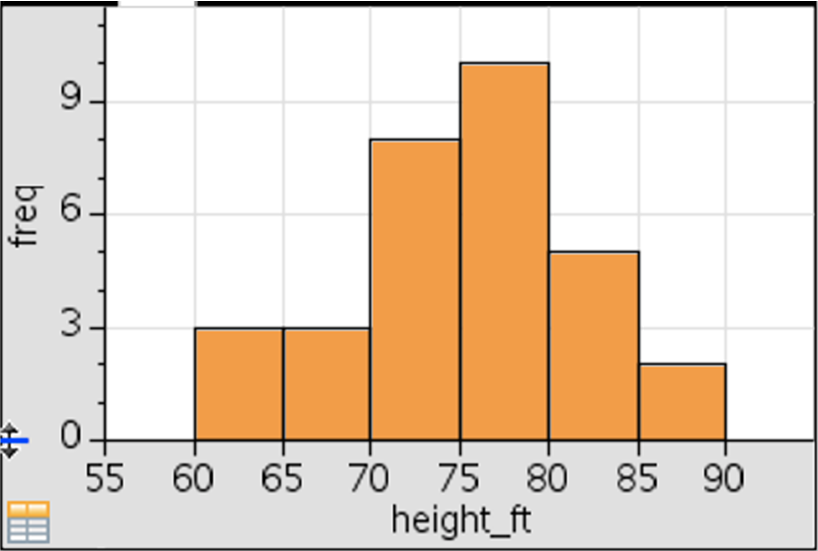Understanding
Students explore how changing the bin width can change the story in the distribution of the data.
What to look for
Note that histograms are ordered according to a number line and are used with quantitative data while bar graphs have no inherent order and are used to indicate some feature of qualitative data.Sample Assessment
The graph below displays the heights of cherry trees in a park in Washington DC. The first bin width is [60,65).Height of Cherry Trees

Which interval contains the median height of the cherry trees?
Answer: [75, 80)




